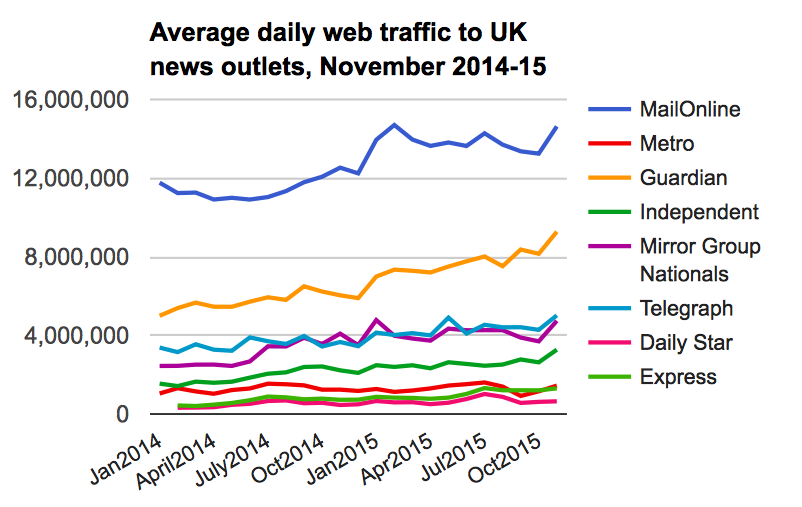
Traffic soared for a number of U.K. newspapers in November, but The Independent was a standout, growing 24 percent over October, to 3 million average daily unique browsers.
News of the Paris attacks lifted traffic for news sites across the board, but Independent parent ESI Media is attributing growth across its titles to September site redesigns to boost page-load time at the Independent as well as the Evening Standard, said Zach Leonard, managing director of digital for ESI Media.
Other goals were to improve ad viewability and make the sites responsive on mobile devices, Leonard said.

Slow load times are blamed for increased use of ad blocking, Leonard said it’s currently seeing far less than the 20 precent of traffic blocking ads that other publishers (such as City AM) have been reporting. To speed its load time, the Independent reduced the number of ad tags and introduced a lighter article format.

Distribution across social platforms also boosted traffic. One of the Independent’s best performers in November was “Who is Lucy the Australopithecus? Five facts you probably didn’t know about oldest hominin ever discovered,” which has racked up 23,000 social shares according to internal figures. “This shows that geography, science and anthropology are still hallmarks of the Independent brand,” said Leonard.
The Independent also has begun publishing half of its Facebook articles to the network’s fast-loading articles initiative, Instant Articles. (The other half are being published the old-fashioned way, with links back to the publisher’s site, although publishers get traffic credit for their Instant Articles views.
More in Media

‘JG believed that even in a demanding industry, it was possible to lead with both rigor and humanity’
The industry pays respects to OpenX CEO John Gentry, who sadly passed away last week.

The Rundown: Google has drawn its AI payment lines — and publishers’ leverage is narrow
For publishers trying to navigate AI licensing, the message was blunt: Google is willing to pay for access, but not for training – and it remains unwilling to define AI Overviews as a compensable use of journalism.

Media Briefing: Google’s latest core update a reminder that pageviews can’t remain the primary metric
Google’s latest core update signals pageviews can no longer be the primary metric, favoring intent-solving publishers over scale.





